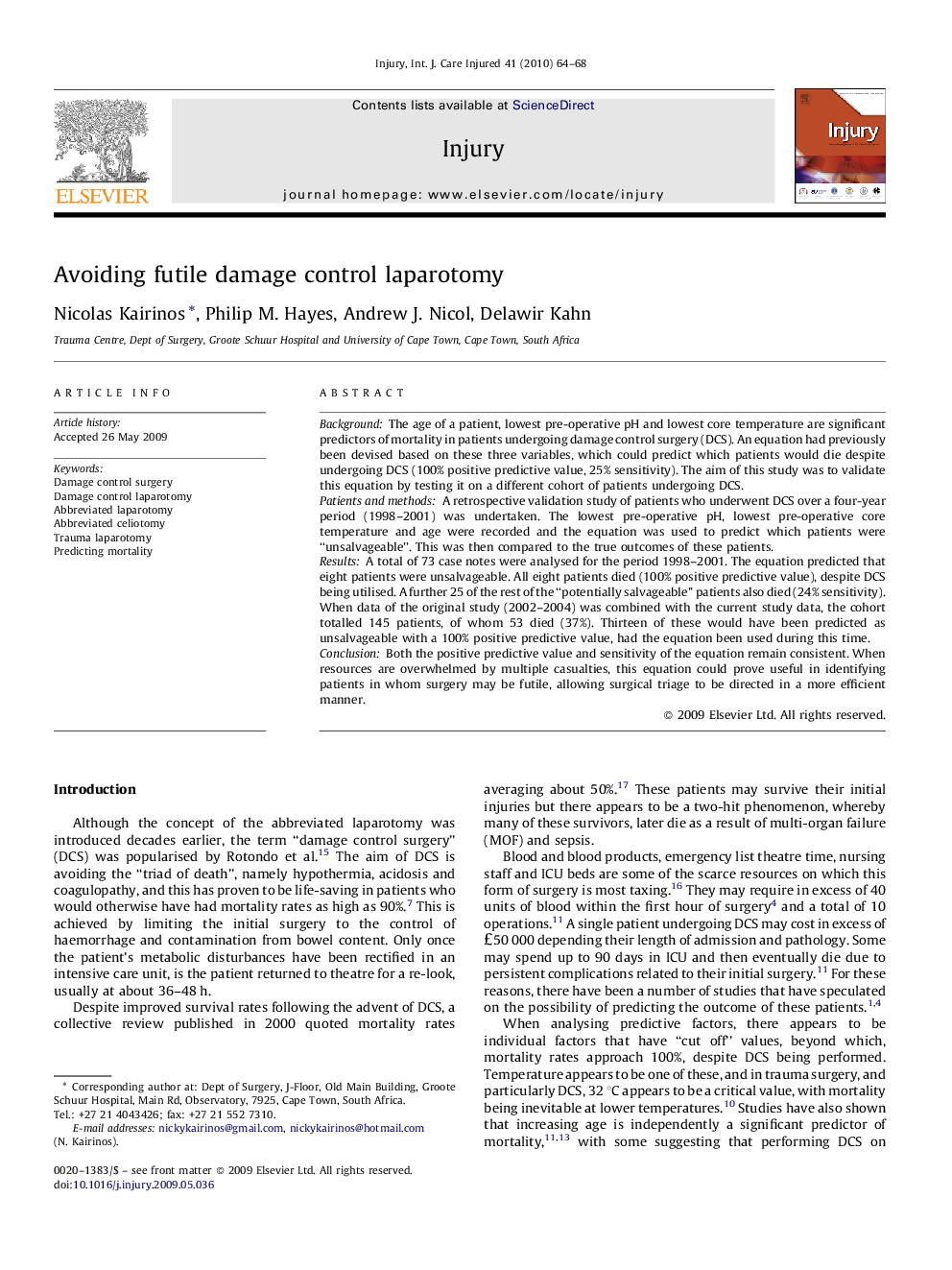| Article ID | Journal | Published Year | Pages | File Type |
|---|---|---|---|---|
| 3241735 | Injury | 2010 | 5 Pages |
BackgroundThe age of a patient, lowest pre-operative pH and lowest core temperature are significant predictors of mortality in patients undergoing damage control surgery (DCS). An equation had previously been devised based on these three variables, which could predict which patients would die despite undergoing DCS (100% positive predictive value, 25% sensitivity). The aim of this study was to validate this equation by testing it on a different cohort of patients undergoing DCS.Patients and methodsA retrospective validation study of patients who underwent DCS over a four-year period (1998–2001) was undertaken. The lowest pre-operative pH, lowest pre-operative core temperature and age were recorded and the equation was used to predict which patients were “unsalvageable”. This was then compared to the true outcomes of these patients.ResultsA total of 73 case notes were analysed for the period 1998–2001. The equation predicted that eight patients were unsalvageable. All eight patients died (100% positive predictive value), despite DCS being utilised. A further 25 of the rest of the “potentially salvageable” patients also died (24% sensitivity). When data of the original study (2002–2004) was combined with the current study data, the cohort totalled 145 patients, of whom 53 died (37%). Thirteen of these would have been predicted as unsalvageable with a 100% positive predictive value, had the equation been used during this time.ConclusionBoth the positive predictive value and sensitivity of the equation remain consistent. When resources are overwhelmed by multiple casualties, this equation could prove useful in identifying patients in whom surgery may be futile, allowing surgical triage to be directed in a more efficient manner.
